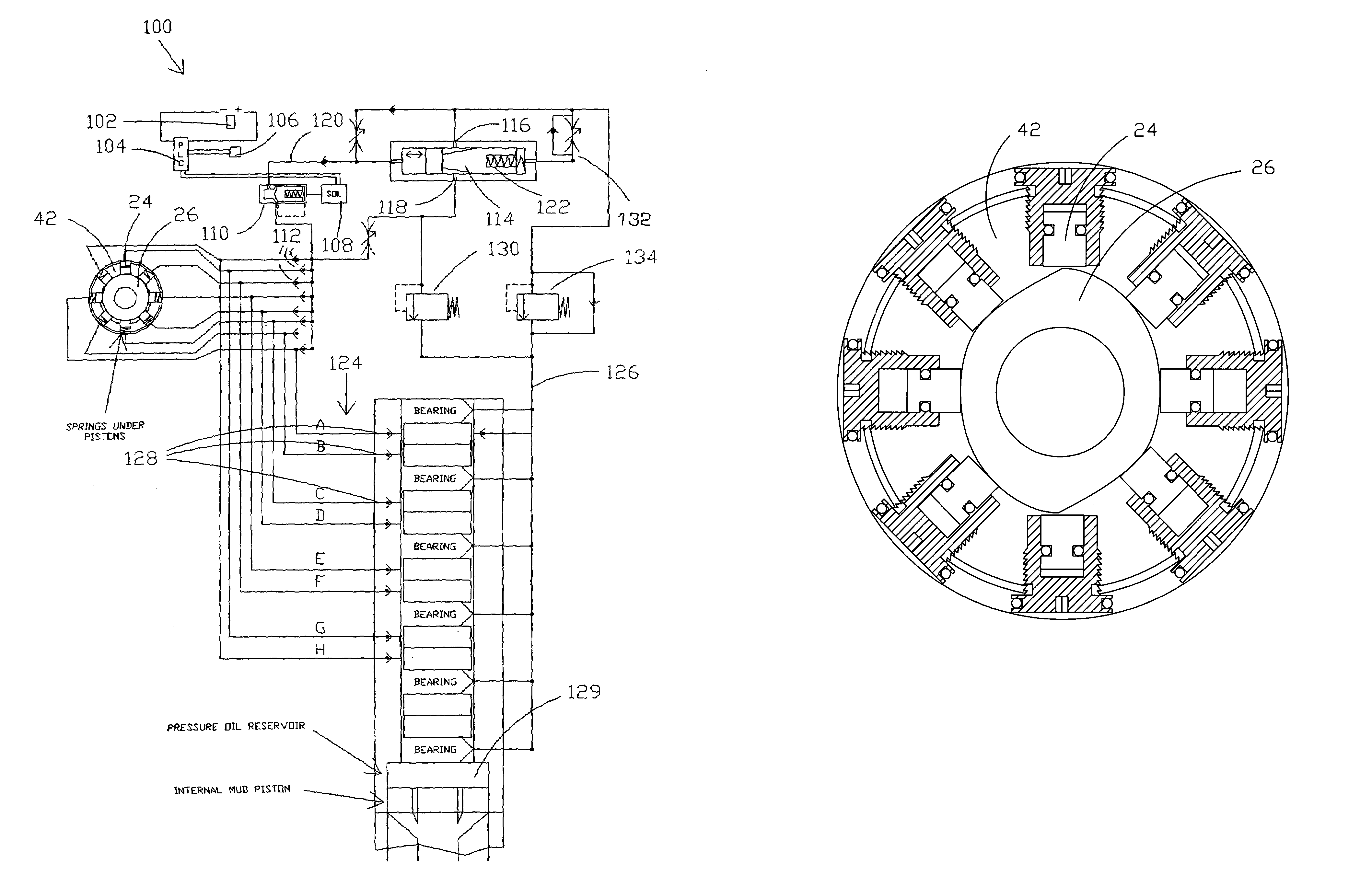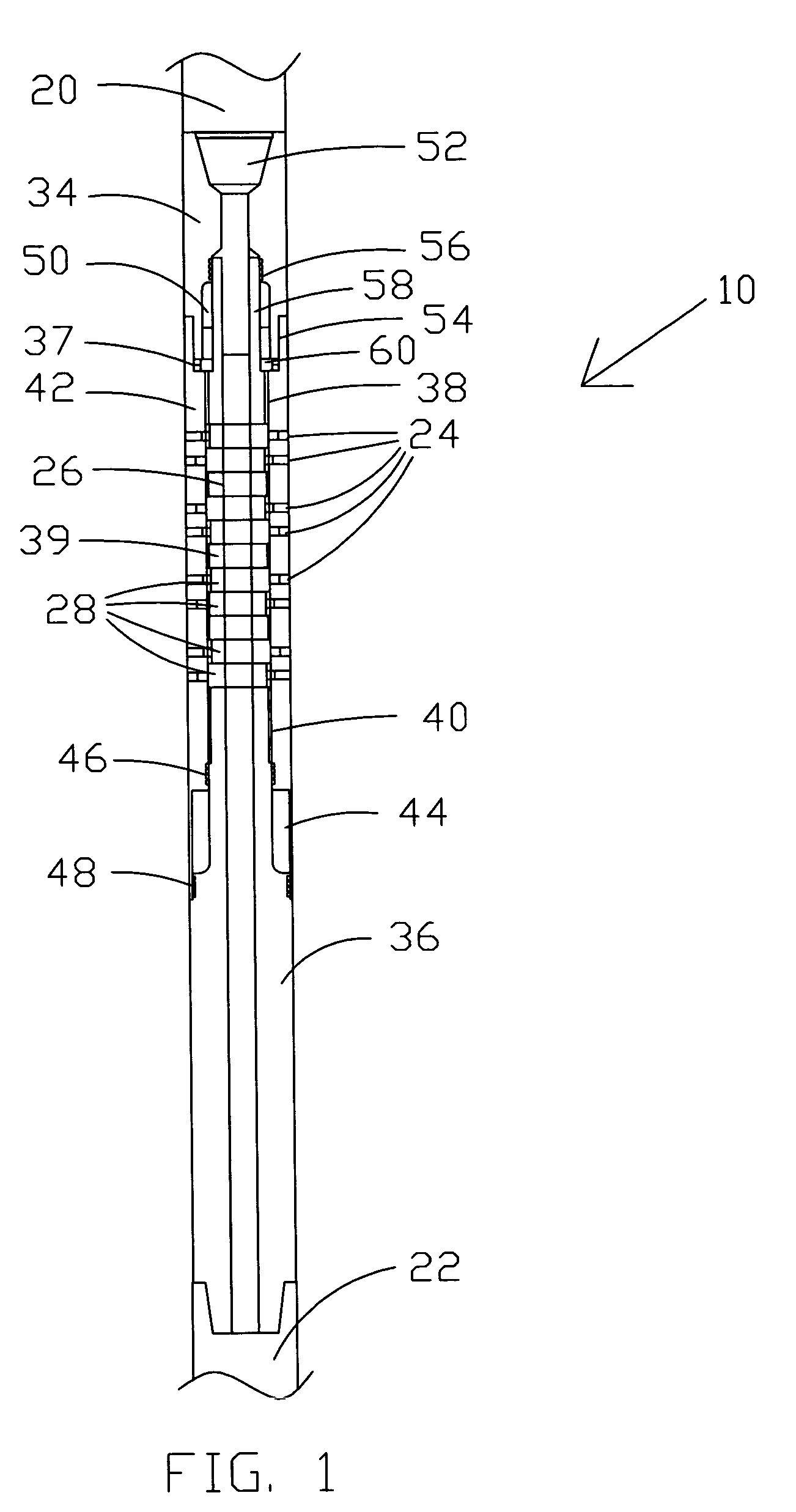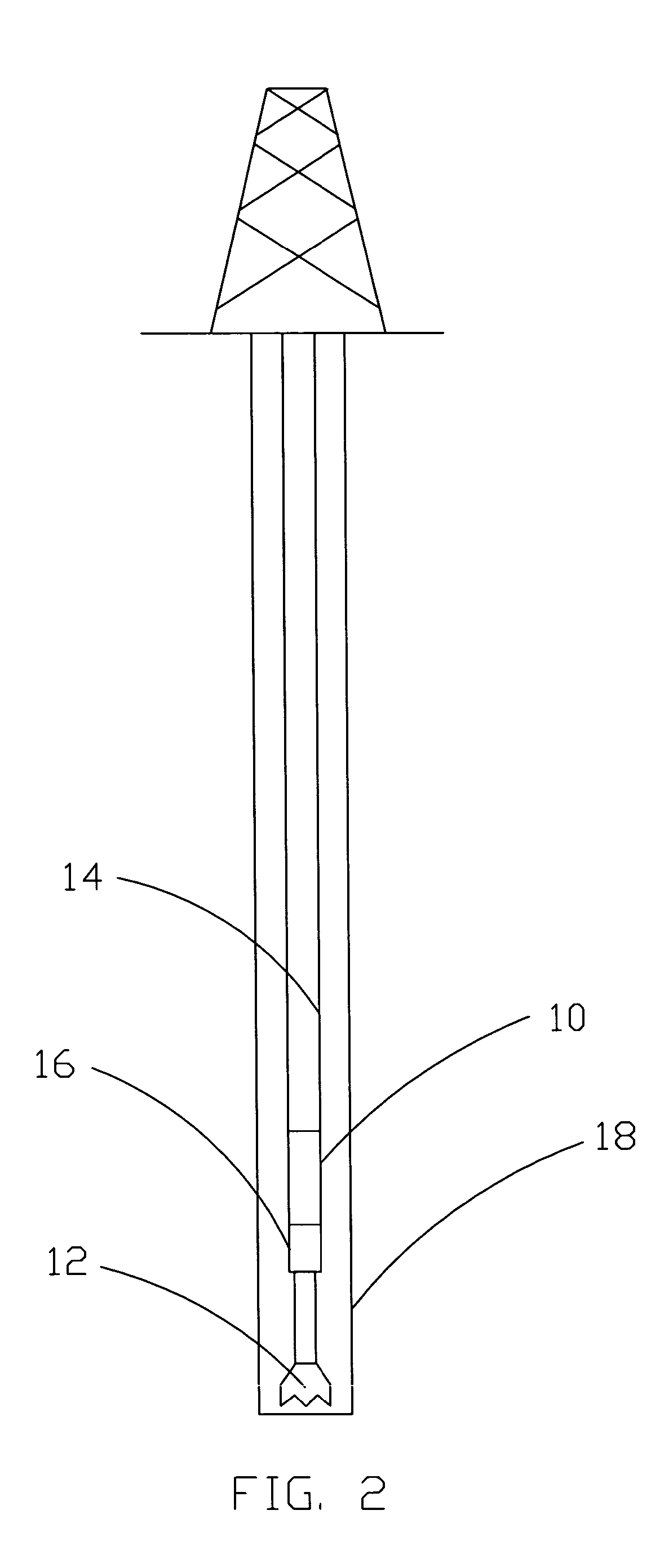Drilling string torsional energy control assembly and method
a technology of torsional energy control and drill string, which is applied in the direction of drilling pipes, directional drilling, borehole/well accessories, etc., can solve the problems of increasing elastic potential energy, increasing the length of the entire drill string, and continuing winding of the drill string, so as to achieve the effect of reducing the torsional oscillation
- Summary
- Abstract
- Description
- Claims
- Application Information
AI Technical Summary
Benefits of technology
Problems solved by technology
Method used
Image
Examples
Embodiment Construction
[0044]Referring now to the drawings, and more particularly to FIG. 1 and FIG. 2, there is shown downhole rotational control assembly 10 which may be utilized for well drilling, earth boring, and / or for other purposes that require the drill string to transfer torque, typically to the bottom hole assembly and the drill bit. While a specific embodiment of rotational control system 10 is provided herein, rotational control assembly 10 could also include any mechanism that is operable to connect and disconnect torque between shafts or drilling tubulars to eliminate torsional oscillations and thereby control torsional energy in the drill string. Accordingly, rotational control assembly 10 may comprise an on-off clutch which enables two rotating shafts and / or two drilling tubulars and / or a drilling tubular and the drill bit to be substantially or completely connected (engaged) for torque transfer but may also be substantially or completely disconnected (disengaged) for little or no torque ...
PUM
 Login to View More
Login to View More Abstract
Description
Claims
Application Information
 Login to View More
Login to View More - R&D
- Intellectual Property
- Life Sciences
- Materials
- Tech Scout
- Unparalleled Data Quality
- Higher Quality Content
- 60% Fewer Hallucinations
Browse by: Latest US Patents, China's latest patents, Technical Efficacy Thesaurus, Application Domain, Technology Topic, Popular Technical Reports.
© 2025 PatSnap. All rights reserved.Legal|Privacy policy|Modern Slavery Act Transparency Statement|Sitemap|About US| Contact US: help@patsnap.com



